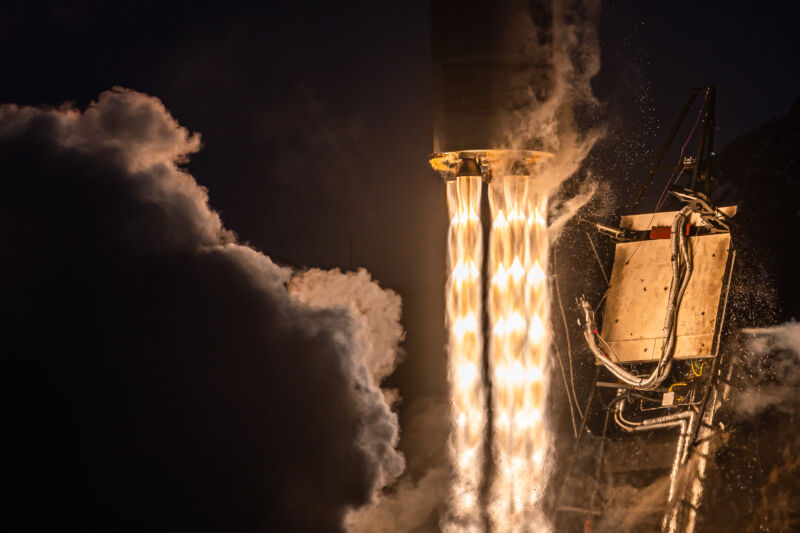
Astra, a small-rocket company based in California still striving to reach orbit, has set of target date of October 27 for its next launch attempt. The rocket, simply named "LV0007," will carry a test payload weighing a few dozen kilograms for the US Space Force.
The stakes are high for this mission. Although the payload is small and likely of relatively little monetary value, Astra needs to demonstrate its viability as a launch company after several failures. This will be the company's fourth attempt to reach orbit—and it comes as other small launch competitors are either successfully orbiting their rockets or soon to make their first attempts.
"Our team is looking forward to returning to flight and learning more about our launch system, consistent with our launch and learn philosophy," said Chris Kemp, founder, chairman and CEO of Astra, in a news release announcing the flight.
As its name implies, this is the seventh rocket Astra has built. The first two models were strictly for suborbital tests. The third rocket was lost during a launch pad fire. The fourth rocket—the company's first actual attempt at an orbital launch—failed after about 30 seconds due to a guidance error. That flight took place in September 2020. During a subsequent attempt in December 2020, LV0005 reached space but did not have enough propellant to reach orbit.
Although technically a failure, this second flight demonstrated perfect first-stage performance, stage separation, and a second engine burn. This gave Astra confidence that it would reach orbit on a third flight attempt.
So expectations were high on August 28, 2021, when LV0006 counted down to an attempt. But the launch went sideways almost from the moment the engines ignited, with the rocket moving more horizontal than vertical, before correcting itself and following an upward trajectory. After 148 seconds, a range safety officer terminated the flight after it moved out of its launch corridor.
In a blog post published Tuesday morning, Astra chief engineer Benjamin Lyon provided more information about this failure and steps the company has taken to ensure it does not happen again.
"The issue we encountered was something we hadn’t seen before," Lyon wrote. "Leading up to liftoff, the first stage propellant distribution system provides the rocket with fuel and oxidizer. We designed the system to quickly disconnect and seal when the rocket lifts off. On this launch, propellants leaked from the system, mixed, and became trapped in an enclosed space beneath the interface between the rocket and the launcher."
At this point, exhaust from the rocket's five engines ignited the propellant, which in turn cut the connection to the fuel pump electronics. This led to a shutdown of one of the rocket's engines a fraction of a second after the booster lifted off. This caused the rocket to effectively hover before its on-board flight software compensated, allowing the rocket to fly more upward. The four remaining engines, however, did not have enough thrust to boost the rocket into orbit.
Lyon said Astra has modified the design of the rocket's fueling system so that the kerosene fuel and liquid oxygen oxidizer can no longer mix. It has also been modified to further reduce the risk of leakage during the fueling process. "We believe these changes significantly reduce the likelihood of seeing a similar event in the future," Lyon said.
And so Astra will return to its launch site in Kodiak, Alaska, later this month for its fourth attempt to reach orbit. The company has a primary launch window from October 27 through October 31, with a backup opportunity running from November 5 through November 12.
After completing a Special Purpose Acquisition Company transaction earlier this year, Astra became a publicly traded company on July 1. Since that time the company's stock has fallen by nearly 50 percent. A successful launch, validating Astra's rocket technology, and giving it some momentum for future developments would likely go a long way toward spurring a recovery in the stock price.
reader comments
124